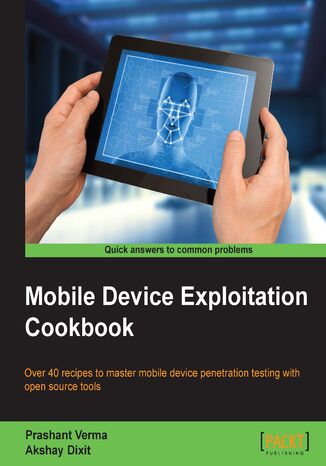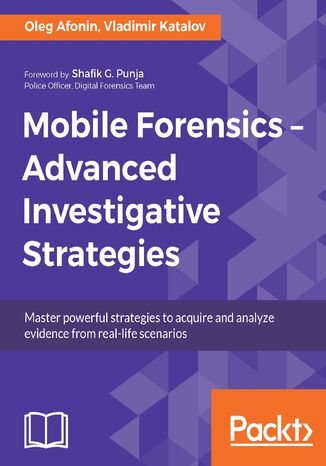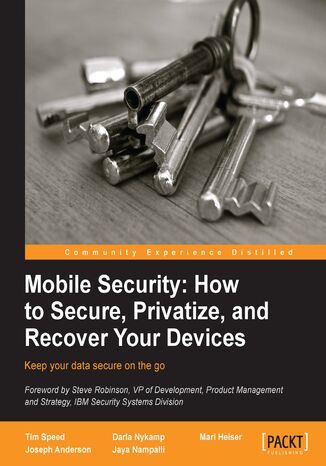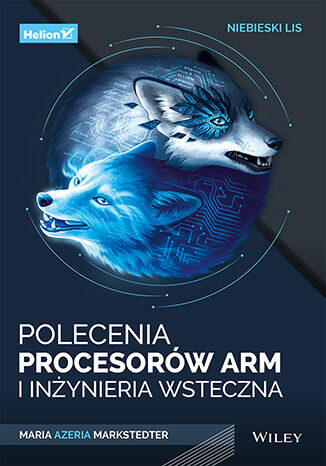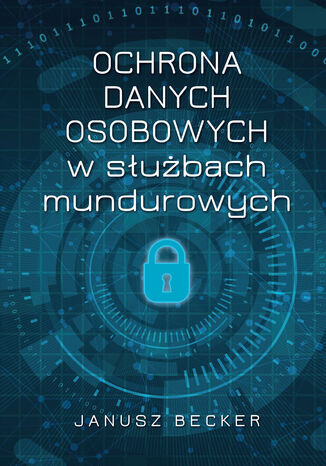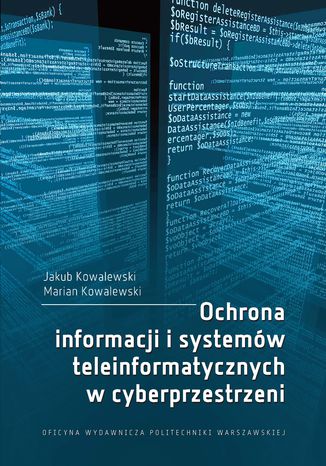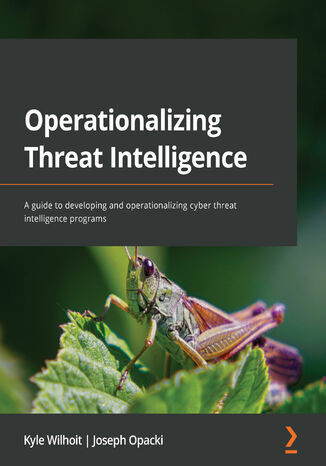Kategorien
E-Books
-
Wirtschaft
- Bitcoin
- Geschäftsfrau
- Coaching
- Controlling
- E-Business
- Ökonomie
- Finanzen
- Börse und Investitionen
- Persönliche Kompetenzen
- Computer im Büro
- Kommunikation und Verhandlungen
- Kleines Unternehmen
- Marketing
- Motivation
- Multimedia-Training
- Immobilien
- Überzeugung und NLP
- Steuern
- Sozialpolitik
- Handbȕcher
- Präsentationen
- Führung
- Public Relation
- Berichte, Analysen
- Geheimnis
- Social Media
- Verkauf
- Start-up
- Ihre Karriere
- Management
- Projektmanagement
- Personal (HR)
-
Für Kinder
-
Für Jugendliche
-
Bildung
-
Enzyklopädien, Wörterbücher
-
E-Presse
- Architektura i wnętrza
- Biznes i Ekonomia
- Haus und Garten
- E-Business
- Finanzen
- Persönliche Finanzen
- Unternehmen
- Fotografie
- Informatik
- HR und Gehaltsabrechnung
- Computer, Excel
- Buchhaltung
- Kultur und Literatur
- Wissenschaftlich und akademisch
- Umweltschutz
- meinungsbildend
- Bildung
- Steuern
- Reisen
- Psychologie
- Religion
- Landwirtschaft
- Buch- und Pressemarkt
- Transport und Spedition
- Gesundheit und Schönheit
-
Geschichte
-
Informatik
- Office-Programme
- Datenbank
- Bioinformatik
- IT Branche
- CAD/CAM
- Digital Lifestyle
- DTP
- Elektronik
- Digitale Fotografie
- Computergrafik
- Spiele
- Hacking
- Hardware
- IT w ekonomii
- Wissenschaftliche Pakete
- Schulbücher
- Computergrundlagen
- Programmierung
- Mobile-Programmierung
- Internet-Server
- Computernetzwerke
- Start-up
- Betriebssysteme
- Künstliche Inteligenz
- Technik für Kinder
- Webmaster
-
Andere
-
Fremdsprachen lernen
-
Kultur und Kunst
-
Lektüre
-
Literatur
- Anthologien
- Ballade
- Biografien und Autobiografien
- Für Erwachsene
- Drama
- Tagebücher, Memoiren, Briefe
- Epos
- Essay
- Science Fiction
- Felietonys
- Fiktion
- Humor, Satire
- Andere
- Klassisch
- Krimi
- Sachbücher
- Belletristik
- Mity i legendy
- Nobelpreisträger
- Kurzgeschichten
- Gesellschaftlich
- Okultyzm i magia
- Erzählung
- Erinnerungen
- Reisen
- Gedicht
- Poesie
- Politik
- Populärwissenschaftlich
- Roman
- Historischer Roman
- Prosa
- Abenteuer
- Journalismus
- Reportage
- Romans i literatura obyczajowa
- Sensation
- Thriller, Horror
- Interviews und Erinnerungen
-
Naturwissenschaften
-
Sozialwissenschaften
-
Schulbücher
-
Populärwissenschaft und akademisch
- Archäologie
- Bibliotekoznawstwo
- Filmwissenschaft
- Philologie
- Polnische Philologie
- Philosophie
- Finanse i bankowość
- Erdkunde
- Wirtschaft
- Handel. Weltwirtschaft
- Geschichte und Archäologie
- Kunst- und Architekturgeschichte
- Kulturwissenschaft
- Linguistik
- Literaturwissenschaft
- Logistik
- Mathematik
- Medizin
- Geisteswissenschaften
- Pädagogik
- Lehrmittel
- Populärwissenschaftlich
- Andere
- Psychologie
- Soziologie
- Theatrologie
- Teologie
- Theorien und Wirtschaftswissenschaften
- Transport i spedycja
- Sportunterricht
- Zarządzanie i marketing
-
Handbȕcher
-
Spielanleitungen
-
Professioneller und fachkundige Leitfaden
-
Jura
- Sicherheit und Gesundheit am Arbeitsplatz
- Geschichte
- Verkehrsregeln. Führerschein
- Rechtswissenschaften
- Gesundheitswesen
- Allgemeines. Wissenskompendium
- akademische Bücher
- Andere
- Bau- und Wohnungsrecht
- Zivilrecht
- Finanzrecht
- Wirtschaftsrecht
- Wirtschafts- und Handelsrecht
- Strafrecht
- Strafrecht. Kriminelle Taten. Kriminologie
- Internationales Recht
- Internationales und ausländisches Recht
- Gesundheitsschutzgesetz
- Bildungsrecht
- Steuerrecht
- Arbeits- und Sozialversicherungsrecht
- Öffentliches, Verfassungs- und Verwaltungsrecht
- Familien- und Vormundschaftsrecht
- Agrarrecht
- Sozialrecht, Arbeitsrecht
- EU-Recht
- Industrie
- Agrar- und Umweltschutz
- Wörterbücher und Enzyklopädien
- Öffentliche Auftragsvergabe
- Management
-
Führer und Reisen
- Afrika
- Alben
- Südamerika
- Mittel- und Nordamerika
- Australien, Neuseeland, Ozeanien
- Österreich
- Asien
- Balkan
- Naher Osten
- Bulgarien
- China
- Kroatien
- Tschechische Republik
- Dänemark
- Ägypten
- Europa
- Frankreich
- Berge
- Griechenland
- Spanien
- Niederlande
- Island
- Litauen
- Mapy, Plany miast, Atlasy
- Miniführer
- Deutschland
- Norwegen
- Aktive Reisen
- Polen
- Portugal
- Andere
- Russland
- Rumänien
- Slowakei
- Slowenien
- Schweiz
- Schweden
- Welt
- Türkei
- Ukraine
- Ungarn
- Großbritannien
- Italien
-
Psychologie
- Lebensphilosophien
- Kompetencje psychospołeczne
- zwischenmenschliche Kommunikation
- Mindfulness
- Allgemeines
- Überzeugung und NLP
- Akademische Psychologie
- Psychologie von Seele und Geist
- Arbeitspsychologie
- Relacje i związki
- Elternschafts- und Kinderpsychologie
- Problemlösung
- Intellektuelle Entwicklung
- Geheimnis
- Sexualität
- Verführung
- Aussehen ind Image
- Lebensphilosophien
-
Religion
-
Sport, Fitness, Diäten
-
Technik und Mechanik
Hörbücher
-
Wirtschaft
- Bitcoin
- Geschäftsfrau
- Coaching
- Controlling
- E-Business
- Ökonomie
- Finanzen
- Börse und Investitionen
- Persönliche Kompetenzen
- Kommunikation und Verhandlungen
- Kleines Unternehmen
- Marketing
- Motivation
- Immobilien
- Überzeugung und NLP
- Steuern
- Handbȕcher
- Präsentationen
- Führung
- Public Relation
- Geheimnis
- Social Media
- Verkauf
- Start-up
- Ihre Karriere
- Management
- Projektmanagement
- Personal (HR)
-
Für Kinder
-
Für Jugendliche
-
Bildung
-
Enzyklopädien, Wörterbücher
-
Geschichte
-
Informatik
-
Andere
-
Fremdsprachen lernen
-
Kultur und Kunst
-
Lektüre
-
Literatur
- Anthologien
- Ballade
- Biografien und Autobiografien
- Für Erwachsene
- Drama
- Tagebücher, Memoiren, Briefe
- Epos
- Essay
- Science Fiction
- Felietonys
- Fiktion
- Humor, Satire
- Andere
- Klassisch
- Krimi
- Sachbücher
- Belletristik
- Mity i legendy
- Nobelpreisträger
- Kurzgeschichten
- Gesellschaftlich
- Okultyzm i magia
- Erzählung
- Erinnerungen
- Reisen
- Poesie
- Politik
- Populärwissenschaftlich
- Roman
- Historischer Roman
- Prosa
- Abenteuer
- Journalismus
- Reportage
- Romans i literatura obyczajowa
- Sensation
- Thriller, Horror
- Interviews und Erinnerungen
-
Naturwissenschaften
-
Sozialwissenschaften
-
Populärwissenschaft und akademisch
-
Handbȕcher
-
Professioneller und fachkundige Leitfaden
-
Jura
-
Führer und Reisen
-
Psychologie
- Lebensphilosophien
- zwischenmenschliche Kommunikation
- Mindfulness
- Allgemeines
- Überzeugung und NLP
- Akademische Psychologie
- Psychologie von Seele und Geist
- Arbeitspsychologie
- Relacje i związki
- Elternschafts- und Kinderpsychologie
- Problemlösung
- Intellektuelle Entwicklung
- Geheimnis
- Sexualität
- Verführung
- Aussehen ind Image
- Lebensphilosophien
-
Religion
-
Sport, Fitness, Diäten
-
Technik und Mechanik
Videokurse
-
Datenbank
-
Big Data
-
Biznes, ekonomia i marketing
-
Cybersicherheit
-
Data Science
-
DevOps
-
Für Kinder
-
Elektronik
-
Grafik / Video / CAX
-
Spiele
-
Microsoft Office
-
Entwicklungstools
-
Programmierung
-
Persönliche Entwicklung
-
Computernetzwerke
-
Betriebssysteme
-
Softwaretest
-
Mobile Geräte
-
UX/UI
-
Web development
-
Management
Podcasts
Andere
Mobile attacks are on the rise. We are adapting ourselves to new and improved smartphones, gadgets, and their accessories, and with this network of smart things, come bigger risks. Threat exposure increases and the possibility of data losses increase. Exploitations of mobile devices are significant sources of such attacks.Mobile devices come with different platforms, such as Android and iOS. Each platform has its own feature-set, programming language, and a different set of tools. This means that each platform has different exploitation tricks, different malware, and requires a unique approach in regards to forensics or penetration testing. Device exploitation is a broad subject which is widely discussed, equally explored by both Whitehats and Blackhats.This cookbook recipes take you through a wide variety of exploitation techniques across popular mobile platforms. The journey starts with an introduction to basic exploits on mobile platforms and reverse engineering for Android and iOS platforms. Setup and use Android and iOS SDKs and the Pentesting environment. Understand more about basic malware attacks and learn how the malware are coded. Further, perform security testing of Android and iOS applications and audit mobile applications via static and dynamic analysis.Moving further, you'll get introduced to mobile device forensics. Attack mobile application traffic and overcome SSL, before moving on to penetration testing and exploitation.The book concludes with the basics of platforms and exploit tricks on BlackBerry and Windows Phone. By the end of the book, you will be able to use variety of exploitation techniques across popular mobile platforms with stress on Android and iOS.
Mobile Forensics - Advanced Investigative Strategies. Click here to enter text
Investigating digital media is impossible without forensic tools. Dealing with complex forensic problems requires the use of dedicated tools, and even more importantly, the right strategies. In this book, you’ll learn strategies and methods to deal with information stored on smartphones and tablets and see how to put the right tools to work.We begin by helping you understand the concept of mobile devices as a source of valuable evidence. Throughout this book, you will explore strategies and plays and decide when to use each technique. We cover important techniques such as seizing techniques to shield the device, and acquisition techniques including physical acquisition (via a USB connection), logical acquisition via data backups, over-the-air acquisition. We also explore cloud analysis, evidence discovery and data analysis, tools for mobile forensics, and tools to help you discover and analyze evidence.By the end of the book, you will have a better understanding of the tools and methods used to deal with the challenges of acquiring, preserving, and extracting evidence stored on smartphones, tablets, and the cloud.
Darla Nykamp, Joseph Anderson, Jayasree Nampalli, Mari Heiser, ...
The threat of hacking may be the most damaging on the internet. Mobile technology is changing the way we live, work, and play, but it can leave your personal information dangerously exposed. Your online safety is at risk and the threat of information being stolen from your device is at an all- time high. Your identity is yours, yet it can be compromised if you don't manage your phone or mobile device correctly.Gain the power to manage all your mobile devices safely. With the help of this guide you can ensure that your data and that of your family is safe. The threat to your mobile security is growing on a daily basis and this guide may just be the help you need.Mobile Security: How to Secure, Privatize, and Recover Your Devices will teach you how to recognize, protect against, and recover from hacking attempts and outline the clear and present threats to your online identity posed by the use of a mobile device.In this guide you will discover just how vulnerable unsecured devices can be, and explore effective methods of mobile device management and identity protection to ensure your data's security. There will be special sections detailing extra precautions to ensure the safety of family members and how to secure your device for use at work.
Mroczne odmęty phishingu. Nie daj się złowić!
Ofensywne i defensywne strony ataków e-mailowych Ataki za pomocą specjalnie spreparowanych wiadomości e-mail stały się jednym z najczęstszych i najbardziej uciążliwych zagrożeń. Mimo kampanii edukacyjnych i szeroko zakrojonych programów bezpieczeństwa phishing wciąż jest niezwykle skuteczną bronią przestępców. Jest tak, gdyż wykorzystuje odruchy, którymi kieruje się znakomita większość ludzi. Aby więc ochronić się przed atakiem, trzeba poznać zarówno podstawy ataków e-mailowych, jak i pewnych zasad psychologii i metod manipulacji ludzkim postępowaniem. Trzymasz w ręku świetny przewodnik po mrocznym świecie phishingu. Opisano tu formy tego rodzaju ataków, przedstawiono sposoby rozpoznawania fałszywych wiadomości e-mail czy sklonowanych stron internetowych. Omówiono również socjotechniczne aspekty phishingu, dzięki czemu lepiej zrozumiesz psychologiczne mechanizmy rządzące postępowaniem ofiary. Po lekturze tej książki będziesz również wiedział, jak udoskonalić firmowy system bezpieczeństwa, aby skutecznie odpierać ataki e-mailowe — nawet te bardzo wyrafinowane! W tej książce: opis słynnych włamań dokonanych za pomocą spreparowanych e-maili analiza celów ataku i korzyści, jakie osiągają atakujący psychologiczne i socjologiczne podstawy phishingu analiza przyczyn nieskuteczności firmowych programów budowania świadomości bezpieczeństwa informacji metody rozpoznawania ataków metody ochrony systemu informatycznego przed phishingiem Nie daj się złapać na haczyk! Strzeż swego bezpieczeństwa! Christopher Hadnagy jest założycielem spółki Social-Engineer. Od ponad 15 lat zajmuje się kwestiami bezpieczeństwa informacji. Specjalizuje się w badaniu socjotechnicznych metod zdobywania nieuprawnionego dostępu do informacji. Wzięty autor i aktywny uczestnik wielu konferencji. Michele Fincher jest behawiorystką, badaczką i ekspertką w dziedzinie bezpieczeństwa informacji. Pracowała dla Sił Powietrznych USA, gdzie zajmowała się bezpieczeństwem informacji, włączając w to wykłady w Air Force Academy. Obecnie przyczynia się do sukcesu firmy Social-Engineer.
Niebieski lis. Polecenia procesorów Arm i inżynieria wsteczna
Procesory ARM są coraz popularniejsze w urządzeniach mobilnych, laptopach i serwerach. Rosnąca popularność czyni je interesującymi dla badaczy bezpieczeństwa. Specjaliści z tej branży często używają technik inżynierii wstecznej podczas badania plików binarnych. W tym celu konieczne jest zapoznanie się z poleceniami asemblera ARM. Książkę szczególnie docenią analitycy bezpieczeństwa, którzy chcą się zapoznać z zestawem poleceń ARM i zdobyć wiedzę umożliwiającą im efektywne korzystanie z technik inżynierii wstecznej. Poza zestawem potrzebnych poleceń znalazło się w niej mnóstwo przydatnych informacji. Znajdziesz tu przegląd podstawowych zagadnień związanych z systemem operacyjnym, wyjaśnienie, czym są polecenia asemblera i na czym polega proces kompilacji pliku, a także opis mechanizmów działania poleceń służących do przetwarzania danych, dostępu do pamięci i kontroli przepływu sterowania. W kolejnych rozdziałach zapoznasz się z przeglądem technik inżynierii wstecznej, takich jak analiza statyczna i dynamiczna, jak również z kompleksowym omówieniem złośliwego oprogramowania, które może ją utrudniać. W książce: wprowadzenie do architektury ARM zestawy poleceń: A64, A32 i T32, a także format plików ELF przegląd wzorców przepływu sterowania w procesorach ARM narzędzia inżynierii wstecznej proces dezasemblowania i debugowania plików binarnych ARM w systemie Linux typowe narzędzia do dezasemblowania i debugowania plików binarnych ARM Poznaj moc inżynierii wstecznej!
Ochrona danych osobowych w służbach mundurowych
W książce omówiono zagadnienia dotyczące ochrony danych osobowych w różnych służbach mundurowych. Pozycja skierowana jest do wykładowców i studentów szkół wyższych o kierunku bezpieczeństwo wewnętrzne. Będzie również przydatna dla wszystkich osób zainteresowanych tematyką ochrony danych osobowych.
Ochrona informacji i systemów teleinformatycznych w cyberprzestrzeni
Jakub Kowalewski, Marian Kowalewski
W skrypcie omówiono zagrożenia informacji i systemów teleinformatycznych, takich jak oprogramowanie złośliwe, cyberprzestępstwa i cyberterroryzm. Zaprezentowano różnorodne metody ochrony informacji przed zagrożeniami w cyberprzestrzeni, dzieląc je na metody administracyjno-organizacyjne, prawne i normalizacyjne, techniczne oraz fizyczne. Omówiono systemy monitorowania i reagowania na zagrożenia w cyberprzestrzeni, działania edukacyjne w zakresie bezpieczeństwa informacji i systemów teleinformatycznych oraz podstawy prawne ich ochrony. Przytoczono także informacje dotyczące zarządzania bezpieczeństwem organizacji.
We’re living in an era where cyber threat intelligence is becoming more important. Cyber threat intelligence routinely informs tactical and strategic decision-making throughout organizational operations. However, finding the right resources on the fundamentals of operationalizing a threat intelligence function can be challenging, and that’s where this book helps.In Operationalizing Threat Intelligence, you’ll explore cyber threat intelligence in five fundamental areas: defining threat intelligence, developing threat intelligence, collecting threat intelligence, enrichment and analysis, and finally production of threat intelligence. You’ll start by finding out what threat intelligence is and where it can be applied. Next, you’ll discover techniques for performing cyber threat intelligence collection and analysis using open source tools. The book also examines commonly used frameworks and policies as well as fundamental operational security concepts. Later, you’ll focus on enriching and analyzing threat intelligence through pivoting and threat hunting. Finally, you’ll examine detailed mechanisms for the production of intelligence.By the end of this book, you’ll be equipped with the right tools and understand what it takes to operationalize your own threat intelligence function, from collection to production.

